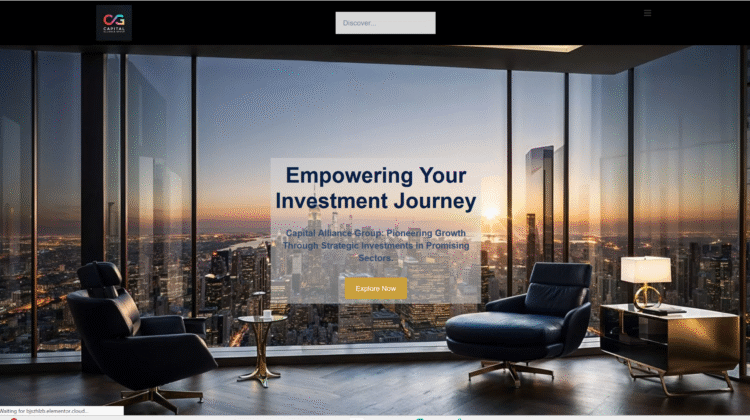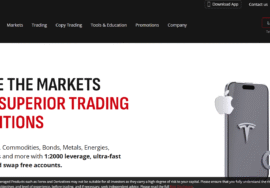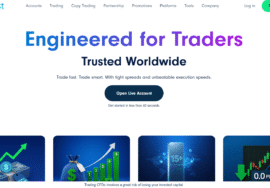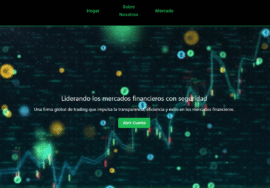
7 Startling Red Flags That Expose Capitalalliancegroupinc as a Risky Platform
7 Startling Red Flags That Expose Capitalalliancegroupinc as a Risky Platform

The financial world is full of new platforms claiming to help investors achieve financial freedom. Some market themselves as AI-driven, others as wealth societies, and still others as private investment clubs. One such name is Capital Alliance Group Inc., found at capitalalliancegroupinc.com. At first glance, the name evokes seriousness and legitimacy. However, when subjected to rigorous scrutiny, the foundation of this entity collapses.
Using the Element 1 approach — which emphasizes evaluating the foundational credibility of a company first — this article uncovers seven startling red flags that explain why people should not do business with Capital Alliance Group Inc. The analysis is grounded in evidence, logic, and the repeated patterns observed in fraudulent financial ventures.
1. A Non-Functional Website
The first red flag is simple but crucial: when attempting to access capitalalliancegroupinc.com, users are met with an internal server error. A finance firm that claims to handle assets, client data, or investment accounts cannot afford to have its public portal non-functional. For legitimate companies, uptime and accessibility are paramount.
The fact that the website is inaccessible strips away any ability for clients to verify services, review terms, or assess legitimacy. In the digital age, a broken website for a financial institution is more than inconvenience — it is a warning sign.
2. Absence of Regulatory Oversight
Every legitimate financial entity must disclose its regulatory status. Banks, brokerages, and capital groups provide license numbers, list the jurisdictions they operate under, and explain how clients are protected by law.
Capital Alliance Group Inc. does not provide any such information. No country of registration is identified, no securities license is visible, and no mention of compliance or oversight appears. This means that if clients entrust money to the platform, they have no legal recourse if things go wrong.
3. No Verifiable Management or Ownership
Another fundamental red flag is the complete absence of verifiable ownership. Real companies highlight their leadership — CEOs, board members, advisors — with biographies and professional histories. Such transparency allows clients to evaluate whether the people in charge are credible.
Capital Alliance Group Inc. provides none of this. There are no names, no biographies, no faces. The domain registration data is masked, concealing the actual owners. This lack of accountability leaves clients in the dark about who controls their money.
4. Possible Identity Confusion or Impersonation
The name “Capital Alliance Group” is generic and could easily be confused with legitimate firms around the world that use similar terminology. Fraudulent operators often rely on such name mimicry to borrow legitimacy by association.
Without disclosures or clarifications, users may mistakenly assume this site is linked to a licensed entity when it is not. This creates a high risk of identity confusion that benefits the operators at the expense of investors.
5. No Service Descriptions or Proof of Operations
Even if the website were functional, credible platforms provide detailed service descriptions, fee schedules, disclaimers, and supporting documentation. They explain what they offer — whether asset management, trading, advisory services, or loans — and how clients are charged.
Capital Alliance Group Inc. has no verifiable record of what services it offers. No product documentation, no performance history, and no white papers are accessible. This lack of clarity is not neutrality; it is concealment.
6. Warning Signs from Disappearing Websites
Fraudulent platforms frequently shut down or disable websites when complaints rise or regulators inquire. An internal server error may indicate poor technical management, but it may also signal deliberate disappearance. This pattern has been observed with countless scam platforms: lure clients, take deposits, and vanish when pressure builds.
The fact that Capital Alliance Group Inc. is currently unreachable raises the possibility that it is following this pattern.
7. Burden of Proof Lies With Them
In finance, credibility is not assumed; it must be demonstrated. The burden of proof rests on the platform to show clients why they should trust it. Capital Alliance Group Inc. has failed to demonstrate:
- Working, accessible infrastructure
- Legal and regulatory registration
- Audited performance records
- Transparent ownership
- Documented service offerings
Because it fails at each point, the rational conclusion is that it does not deserve client trust.
Conclusion: Why Capital Alliance Group Inc. Should Be Avoided
Trust in financial institutions is built on transparency, regulation, and accountability. When a platform fails to demonstrate these qualities, it forfeits the right to handle other people’s money. In the case of Capital Alliance Group Inc., every foundational test collapses.
The most immediate concern is the non-functional website. Without access to services, disclosures, or contact points, clients are left blind. This is unacceptable for a company claiming to manage capital. Technology failures in finance are not benign; they jeopardize data, accounts, and money.
The absence of regulatory oversight compounds the risk. In regulated environments, investors know that agencies such as the SEC, FCA, or local equivalents impose strict requirements. Clients have legal recourse in disputes. With Capital Alliance Group Inc., there is no such safety net. Investors enter a lawless zone where the operators owe them nothing.
The lack of verifiable ownership is equally damning. Financial platforms are built on accountability, and leadership visibility is critical. Without names, faces, or biographies, the entity exists as a faceless shell. If fraud occurs, no one can be held responsible. This structure benefits only the operators while leaving investors powerless.
Furthermore, the use of a generic name like “Capital Alliance Group” is a classic technique in fraudulent ecosystems. By mirroring the names of real institutions, they borrow a veneer of legitimacy. This tactic preys on the inattentive, creating a false sense of trust. In reality, there is no evidence linking this platform to any licensed entity.
The pattern of disappearing websites is a final blow. Scam platforms often retreat into silence once scrutiny begins. Clients who try to access their accounts suddenly find the portal gone, emails unanswered, and funds unrecoverable. The internal server error now greeting visitors to CapitalAllianceGroupInc.com may be the early sign of such a retreat.
Applying the Element 1 framework — evaluating the foundation first — reveals a site without ground to stand on. No transparency, no disclosures, no accountability. The foundation is rotten, and everything built on it is destined to collapse.
For investors, the safest course of action is not engagement but avoidance. Do not deposit funds, do not provide personal data, and do not respond to solicitations from Capital Alliance Group Inc. Instead, direct energy toward regulated, licensed, and transparent firms. These are the institutions that welcome scrutiny because they have nothing to hide.
The lesson here extends beyond this single platform. In today’s environment of flashy names, AI promises, and digital wealth societies, investors must discipline themselves to return to basics: Who owns the company? Which regulator oversees it? What legal protections exist? If these questions cannot be answered, the answer is clear — stay away.
In conclusion, Capital Alliance Group Inc. fails the foundation test in every respect. Its broken website, hidden ownership, and lack of oversight mark it as unsafe. The wisest decision is to reject its promises entirely. Better opportunities exist elsewhere, built on transparency, credibility, and law.









